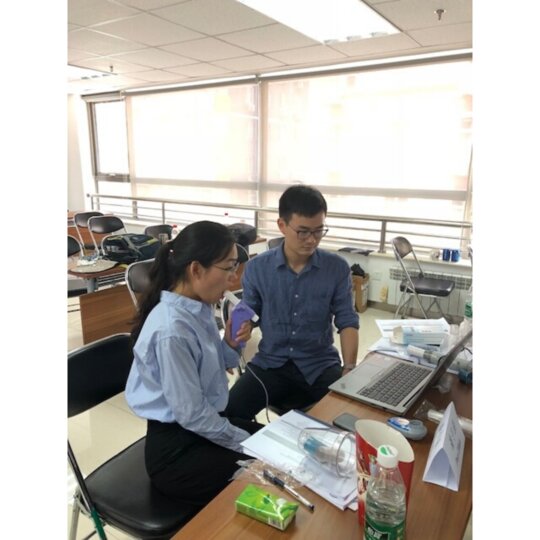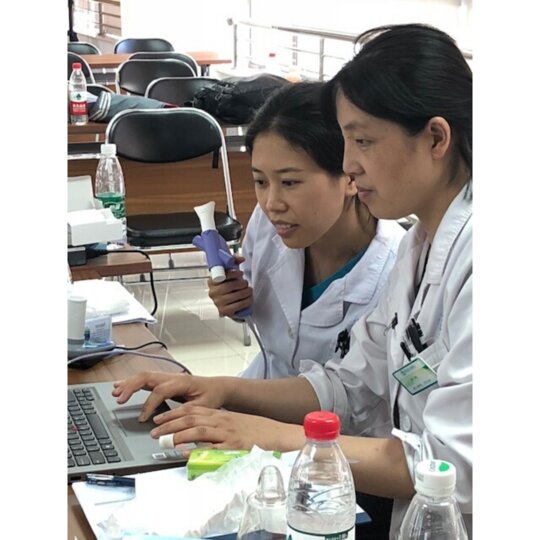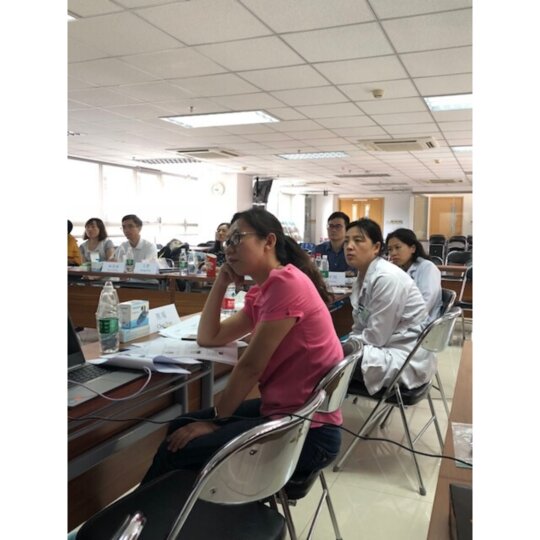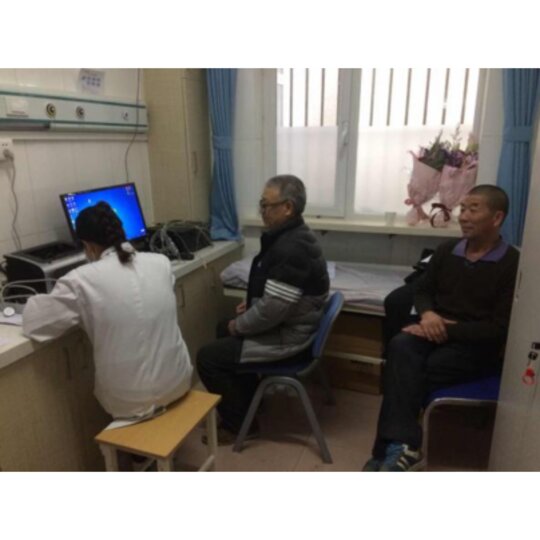Breathe Well China

Project 1: What are the most cost effective screening strategies for identifying undiagnosed COPD in the general population in China?
Study design: Cross sectional (screening test accuracy).
Progress update: The team has recruited 2,498 subjects in 8 community health centre sites, in four regions of China. Data collection ended in October 2019. The team are in the analysis and write-up phase of this project, with an aim for publication and dissemination of the results in August 2020. Ethical approval for the study was granted in August 2018 and it has been registered on ISRTCN. The contract with the University of Birmingham has been signed. Equipment was distributed to the 8 study sites and the staff received training in spirometry. The launch meeting took place in January 2019. All the GPs involved in Breathe Well in China have reviewed how to use all the materials and the skills required. The study pilot was undertaken in February and March 2019 in Caiyu community health center (CHC), Beijing and Shayuan community health center (CHC), Guangzhou.
News release from NIHR: Simple, low cost tests enable early diagnosis of COPD - ‘Breathe Well’ findings published in BMJ Open 2021-10-08
Publication in BMJ Open
Project 2: To describe management and understanding of COPD reported by patients in China
Study design: mixed methods To explore patient & GP opinion on current management of COPD and a future “lung health” service. Data collection includes patient questionnaires and 8 focus groups (separate focus groups for patients and GPs), carried out in 4 cities across China. Data analysis will include descriptive statistics from questionnaires and the focus groups will be analysed using Framework analysis
The population: COPD patients and GPs. Eligibility criteria: Patients with a clinical diagnosis of COPD and GPs which manage COPD.
Progress update: The focus groups will be completed by Spring 2020.
Background
China has a population of 1.39 billion. Average life expectancy is 75 years (1). The health system in modern China traces it roots back to 1949, when the Communist Party created a health system built on government-owned facilities and practically free provision of service. As part of a general push towards privatisation and free markets in the early 1980s, funding for the health care and public health systems dropped dramatically. Economic and geographic health disparities increased, and public trust in the health systems and physicians dropped (2). To counter the trend and increase health coverage and output, the early 2000s saw new reforms being introduced, shifting focus to publicly funded care. A primary care system was rolled out nationwide and in 2008 a modest but comprehensive health insurance was introduced, covering approximately 95% of the population by 2012. (3)
COPD burden and management
COPD prevalence is 3,953 per 100,000 – a major and increasing cause of morbidity in China. Smoking rates are high among men, and in the whole population exposure to air pollution is a common risk factor. Indoor pollution from solid fuel, outdoor particulates, occupational exposure and second hand smoke all add notably to the burden of disease. All in all COPD causes about 4% of total morbidity (DALYs), highest among the included countries (4).
While there is a growing academic awareness about the burden of COPD, there is still a lack of knowledge among the population and physicians (4,5). This contributes to late diagnosis and makes misdiagnosis and mistreatment common. Usage of primary care is low, with patients generally preferring to go directly to hospitals (6). Responsibility for long term follow up lies with primary care providers. When diagnosed, investigation seldom involves spirometry and patients are over-prescribed short-acting beta agonists (SABAs), while treatment with corticosteroids and long-acting inhalers are rare (5).
References
- World Health Organisation (2015) China: WHO statistical profile. World Health Organization.
- Yip, W., & Hsiao, W. C. (2015) What drove the cycles of Chinese health system reforms?. Health Systems & Reform, 1(1), 52-61.
- Cheng, T. M. (2012) Early results of China’s historic health reforms: the view from Minister Chen Zhu. Health Affairs, 31(11), 2536-2544.
- Lou, P., Zhu, Y., Chen, P., Zhang, P., Yu, J., Zhang, N., Chen, N., Zhang, L., Wu, H. and Zhao, J., (2012) Vulnerability, beliefs, treatments and economic burden of chronic obstructive pulmonary disease in rural areas in China: a cross-sectional study. BMC Public Health, 12(1), p.287.
- Fang et al (2011) COPD in China. CHEST , Volume 139 , Issue 4 , 920 - 929
- Blumenthal, D., & Hsiao, W. (2005) Privatization and its discontents: The evolving chinese health care system. The New England journal of medicine, 353(11), 1165-1170.










